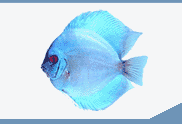

 |
||||||||||||
 |
||||||||||||
| Ichthyophthirius Multifiliis (White Spot) Infections in Fish | ||||||
| Ruth Francis-Floyd and Peggy Reed | ||||||
Ichthyophthirius multifiliis is a ciliated protozoan which causes "Ich" or "white spot disease." This disease is a major problem to aquarists and commercial fish producers world wide. Ichthyophthirius is an important disease of tropical fish, goldfish, and food fish. The disease is highly contagious and spreads rapidly from one fish to another. It can be particularly severe when fish are crowded. While many protozoans reproduce by simple division, a single "Ich" organism can multiply into hundreds of new parasites. This organism is an obligate parasite which means that it cannot survive unless live fish are present. It is capable of causing massive mortality within a short time. An outbreak of "Ich" is an emergency situation which requires immediate treatment: if left untreated, this disease may result in 100% mortality. The Parasite "Ich" is the largest known parasitic protozoan found on fishes. Adult organisms are oval to round and measure 0.5 to 1.0 mm in size. The adult is uniformly ciliated and contains a horseshoe-shaped nucleus which can be seen in older individuals. The breeding stage of the parasite encysts between the layers of the host skin. When mature, it leaves the fish and produces large numbers of free swimming young. These must find a host within 48 hours (at water temperatures of 75-79°F) or they will die. The life cycle of "Ich" is shown in Figure 1.  Figure 1: The life cycle of "Ich".
Figure 1: The life cycle of "Ich".
Disease Signs The classic sign of an "Ich" infection is the presence of small white spots on the skin or gills. These lesions look like small blisters on the skin or fins of the fish. Prior to the appearance of white spots, fish may show signs of irritation, flashing, weakness, loss of appetite, and decreased activity. If the parasite is only present on the gills, white spots will not be seen at all, but fish will die in large numbers. In these fish, gills will be pale and very swollen. White spots should not be used as the only means of diagnosis because other diseases may have a similar appearance. Gill and skin scrapings should be taken when the first signs of illness are observed. If the "Ich" organism is seen, fish should be medicated immediately because fish which are severely infected may not survive treatment. more ... |
 |
|||||
| About Us :: Message Board :: Chat | |||||
| Library :: Photo Gallery :: Links & Resources :: Breeders & Sponsors :: Merchandise | |||||
| Website designed by: EthanCote.com | © 2001-2004, SimplyDiscus.com. All Rights Reserved. | ||||